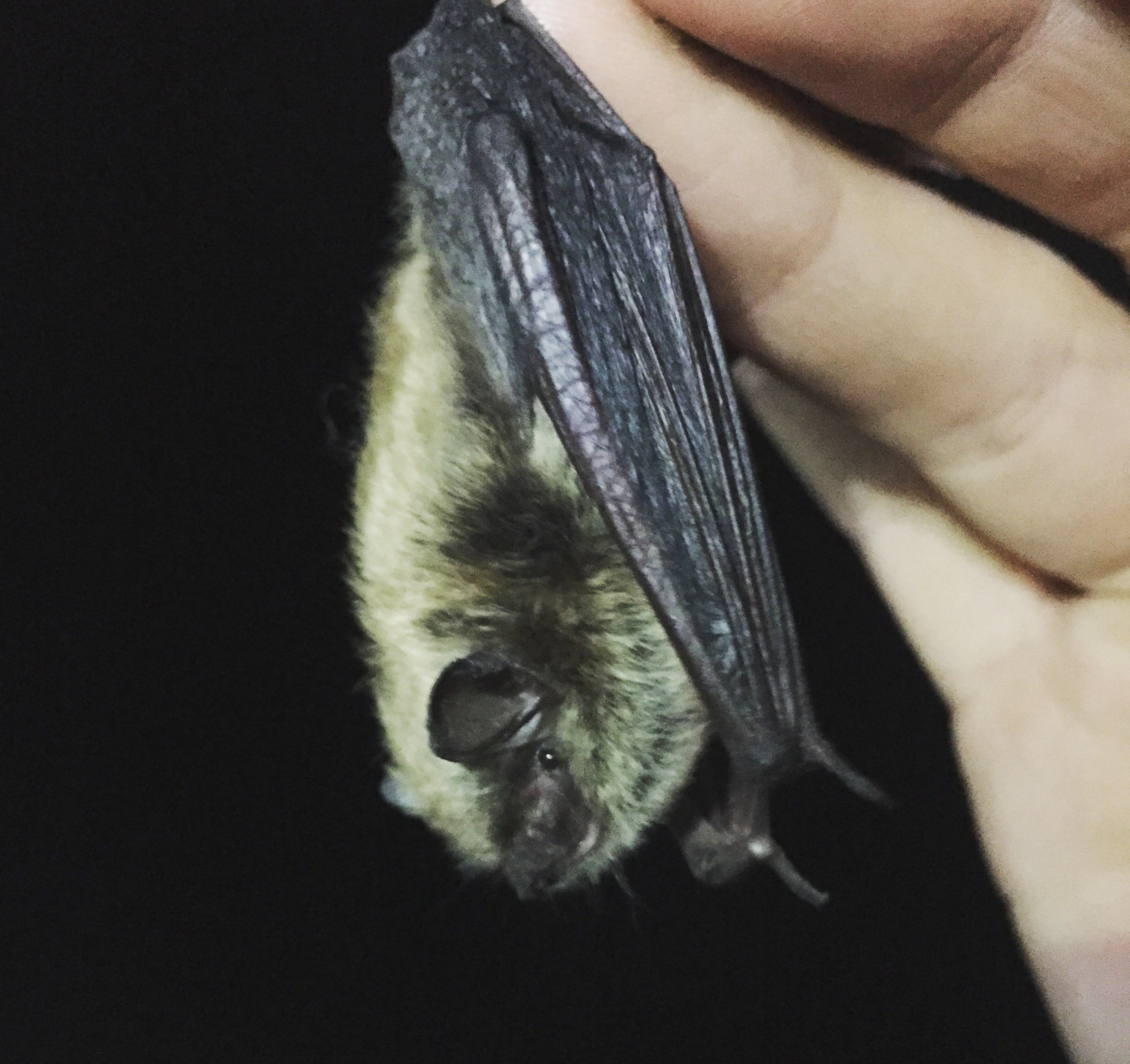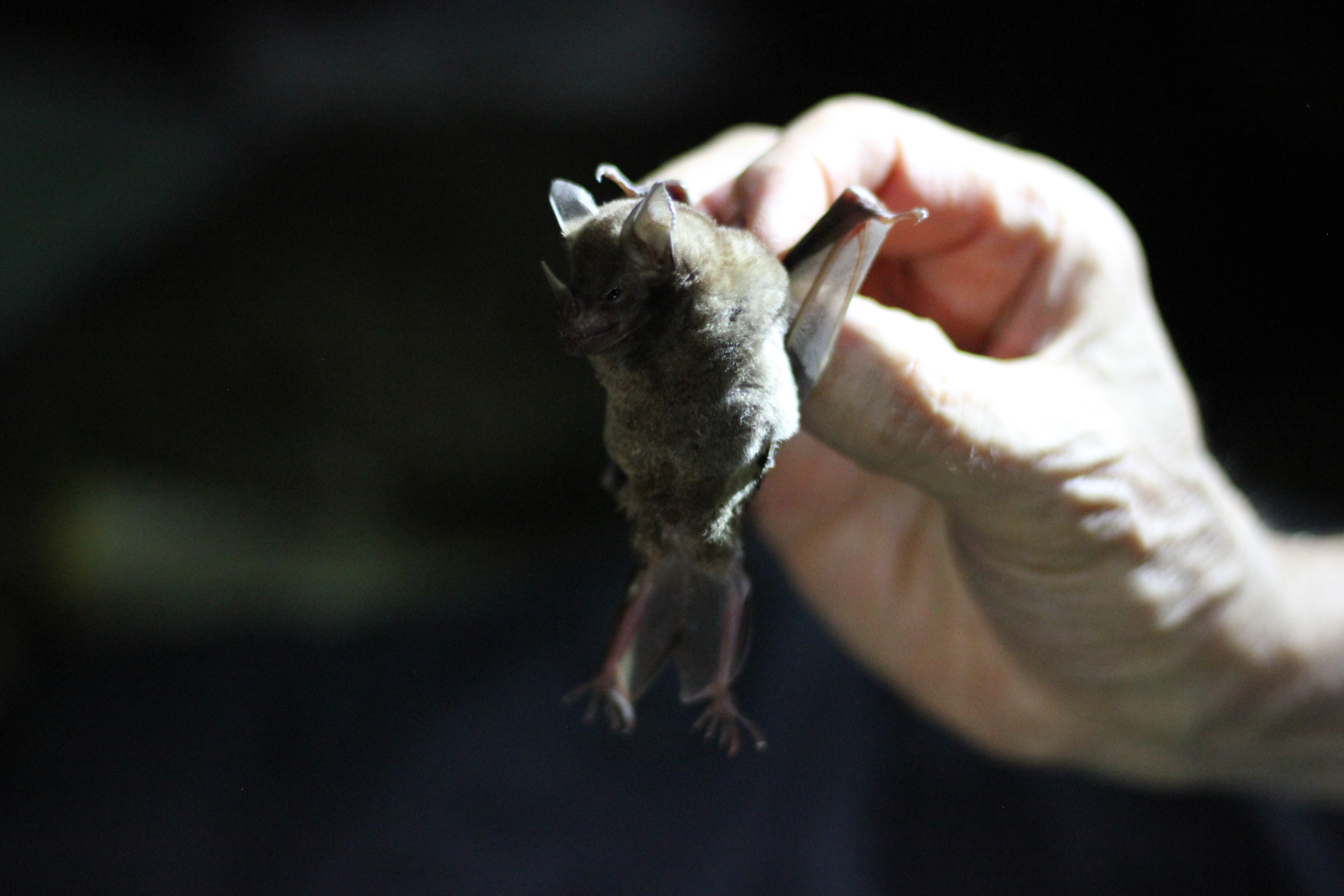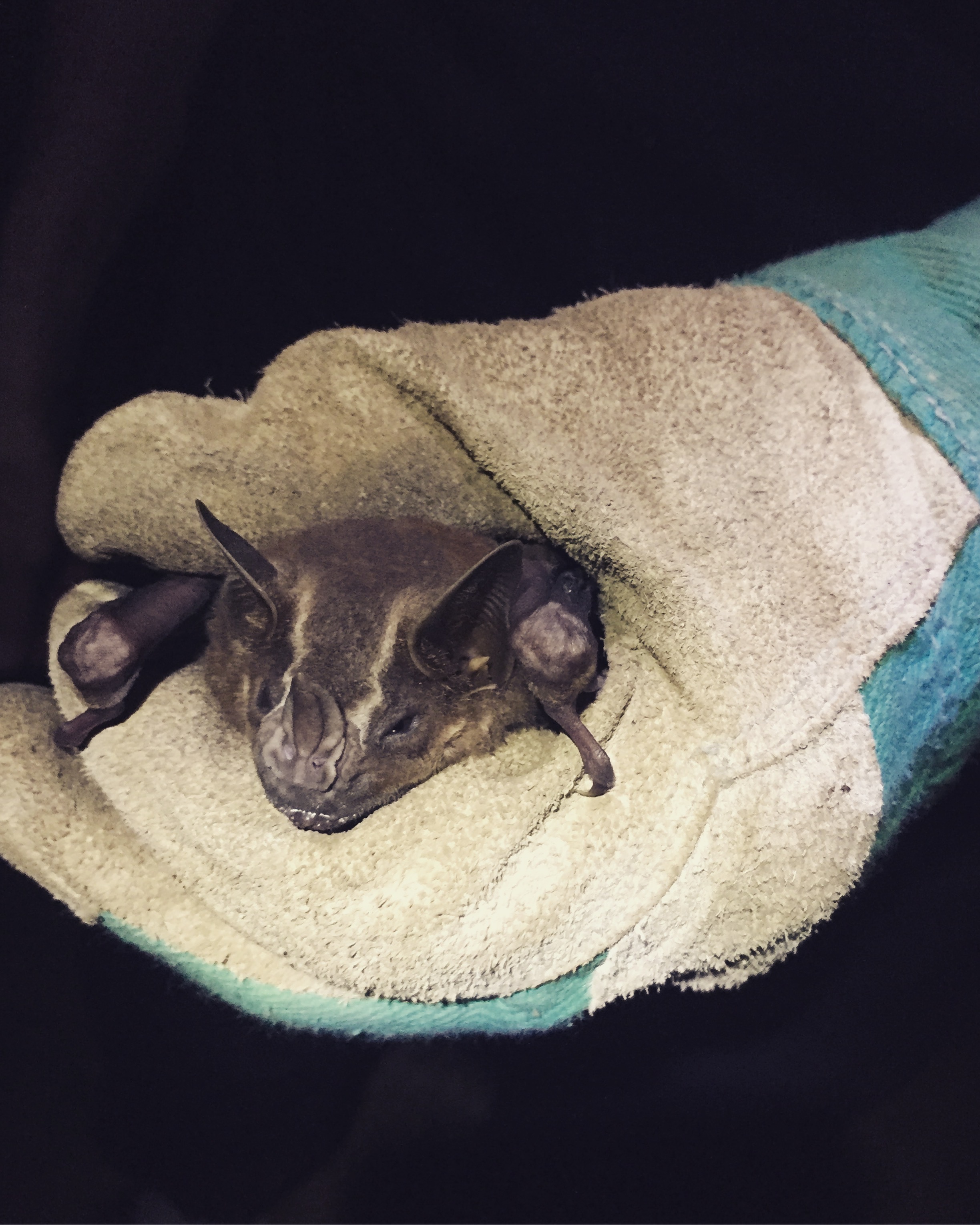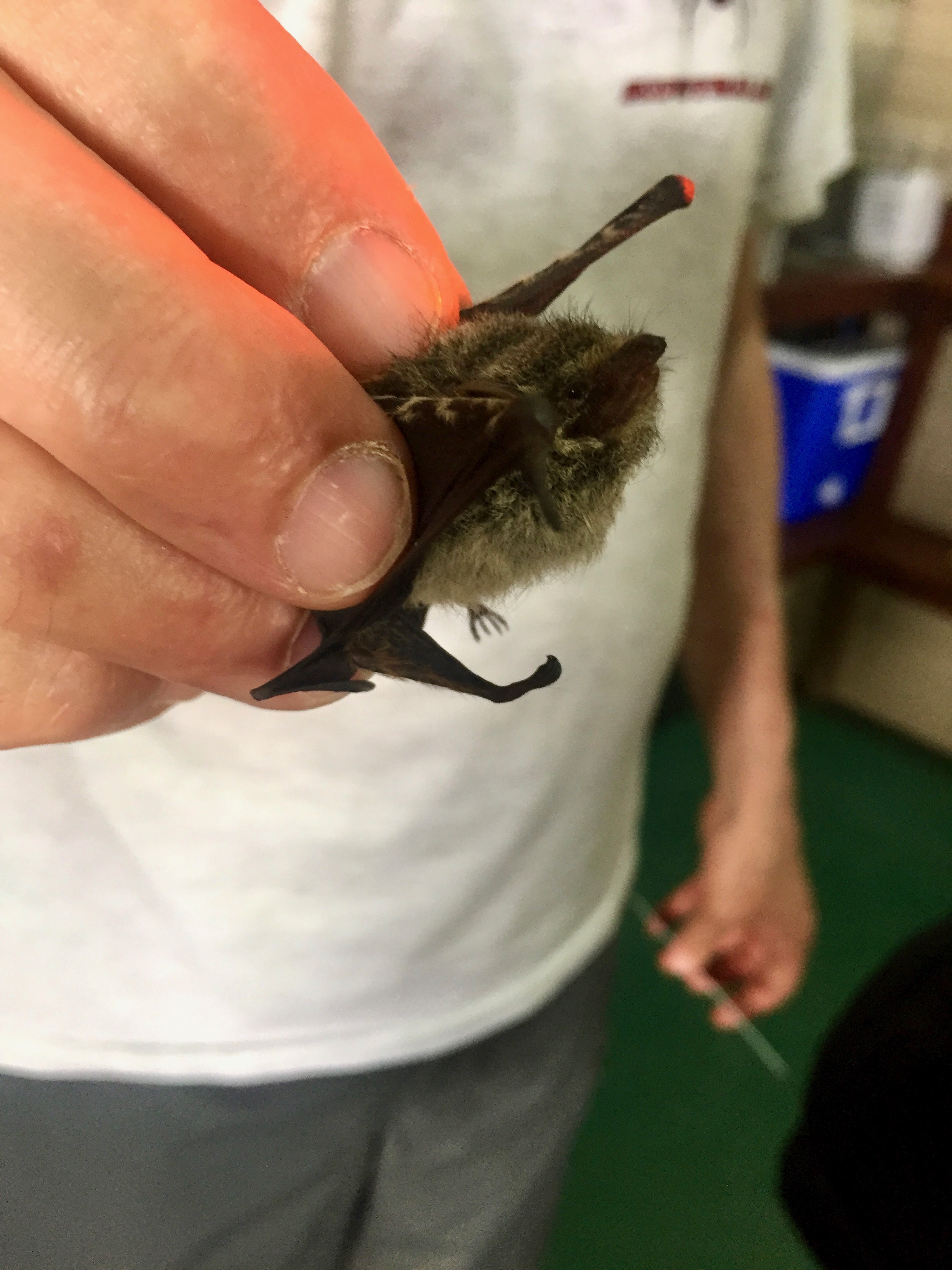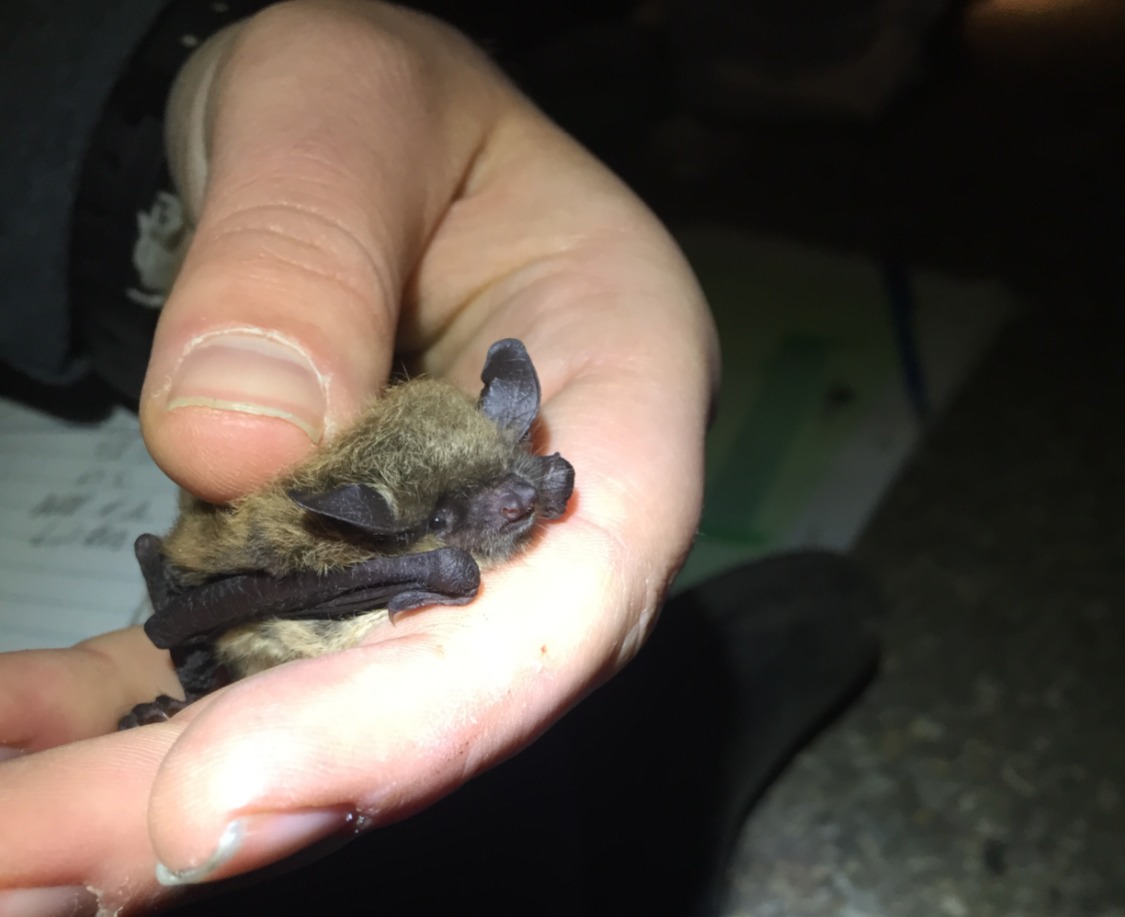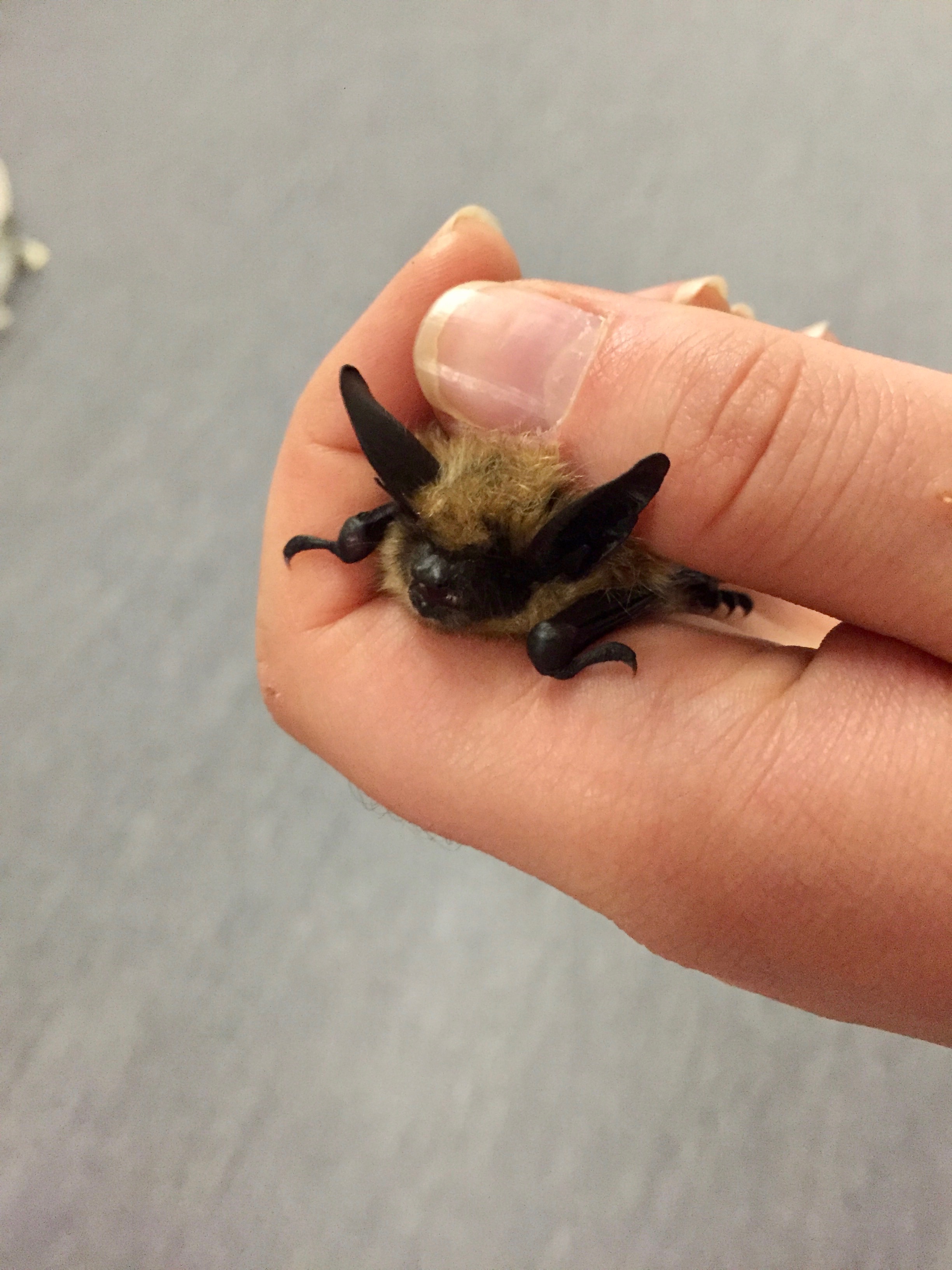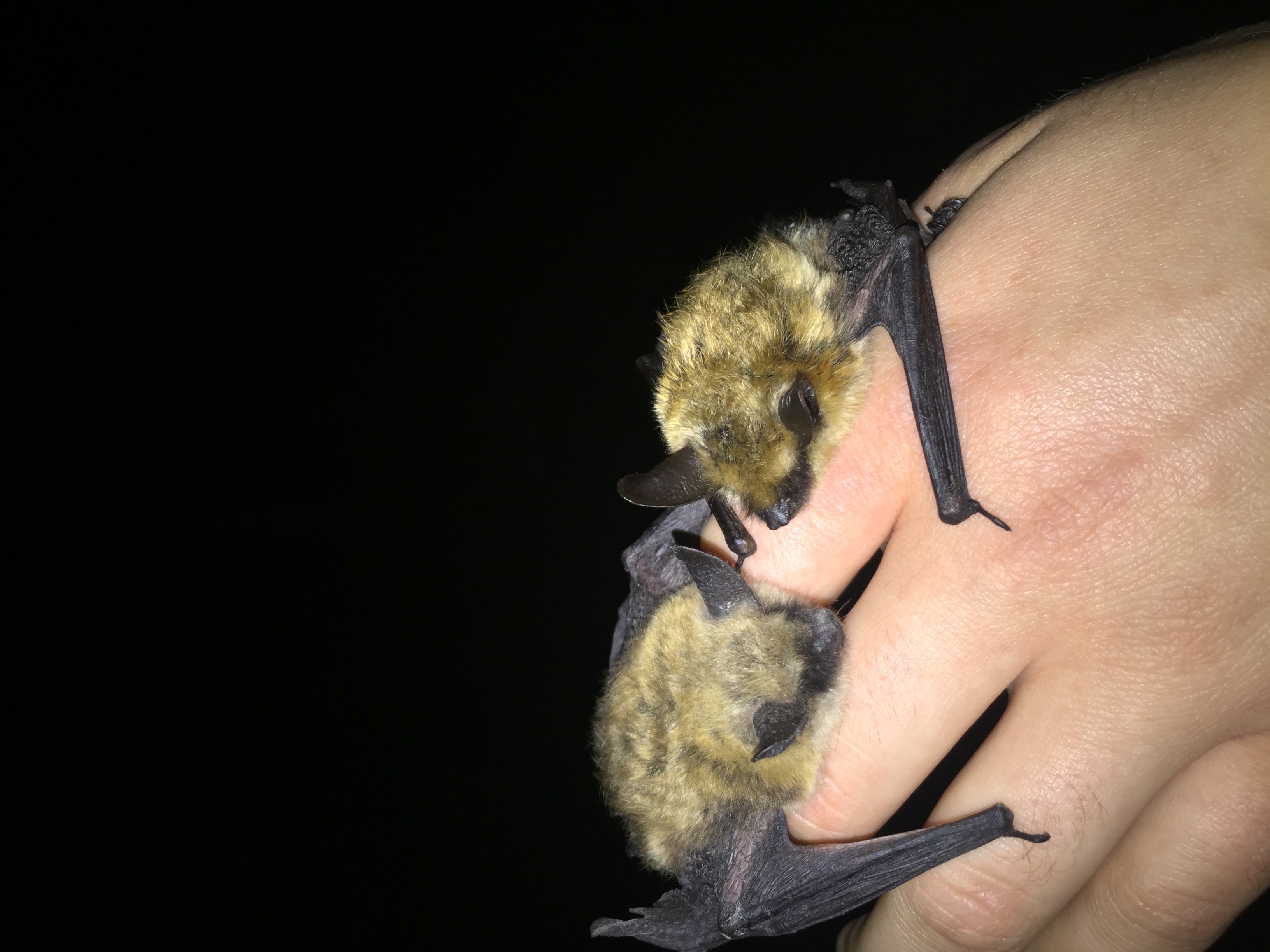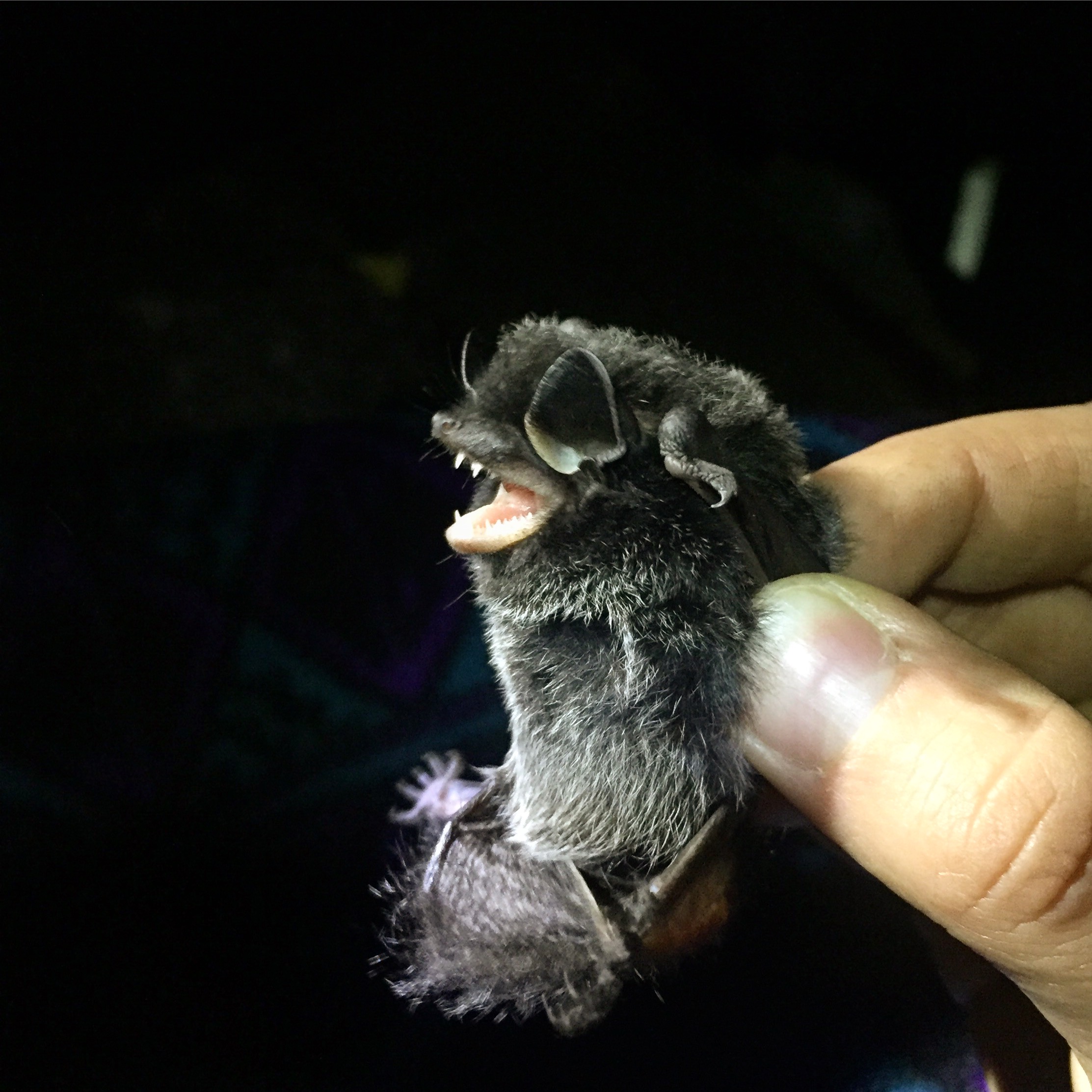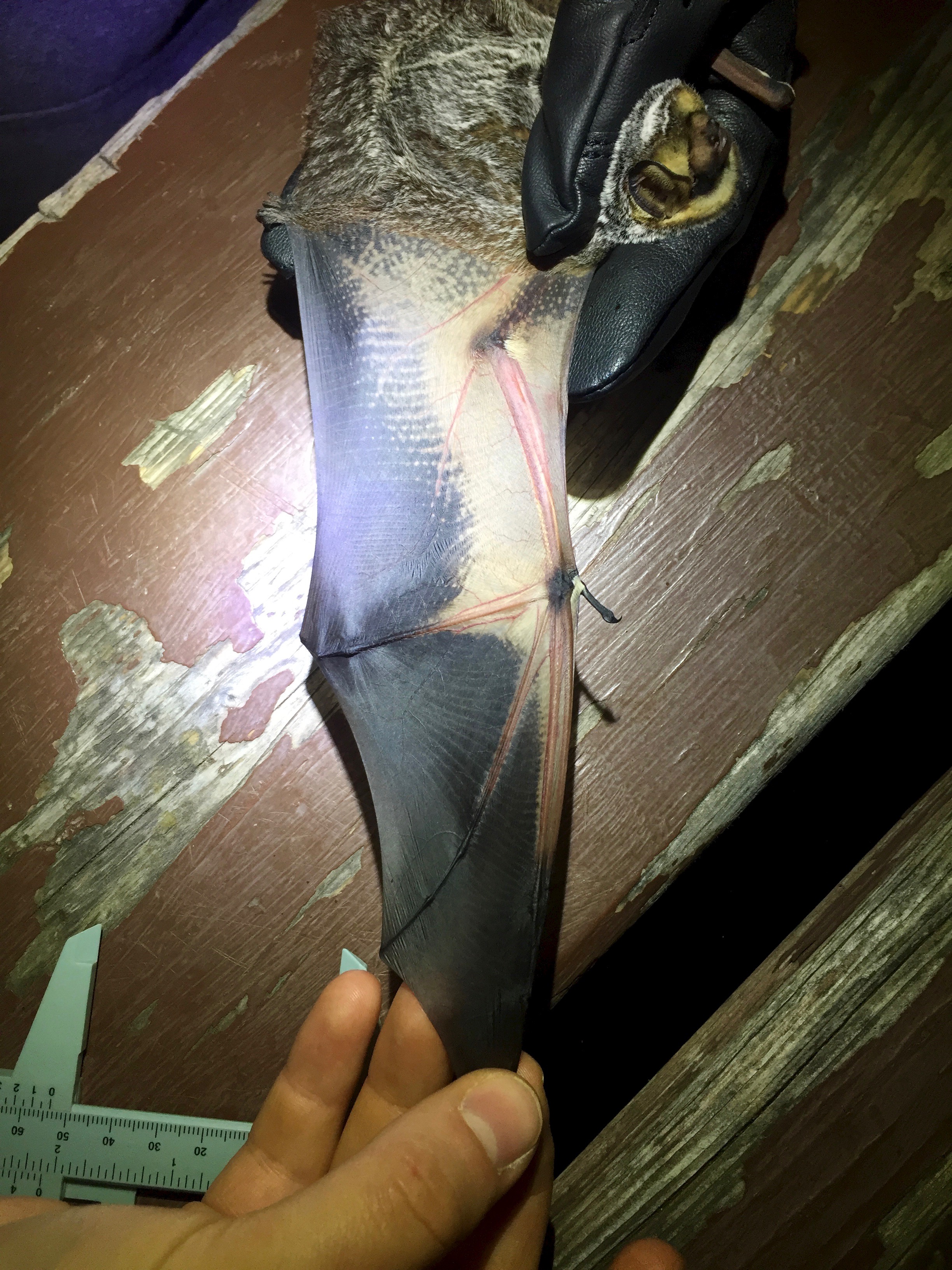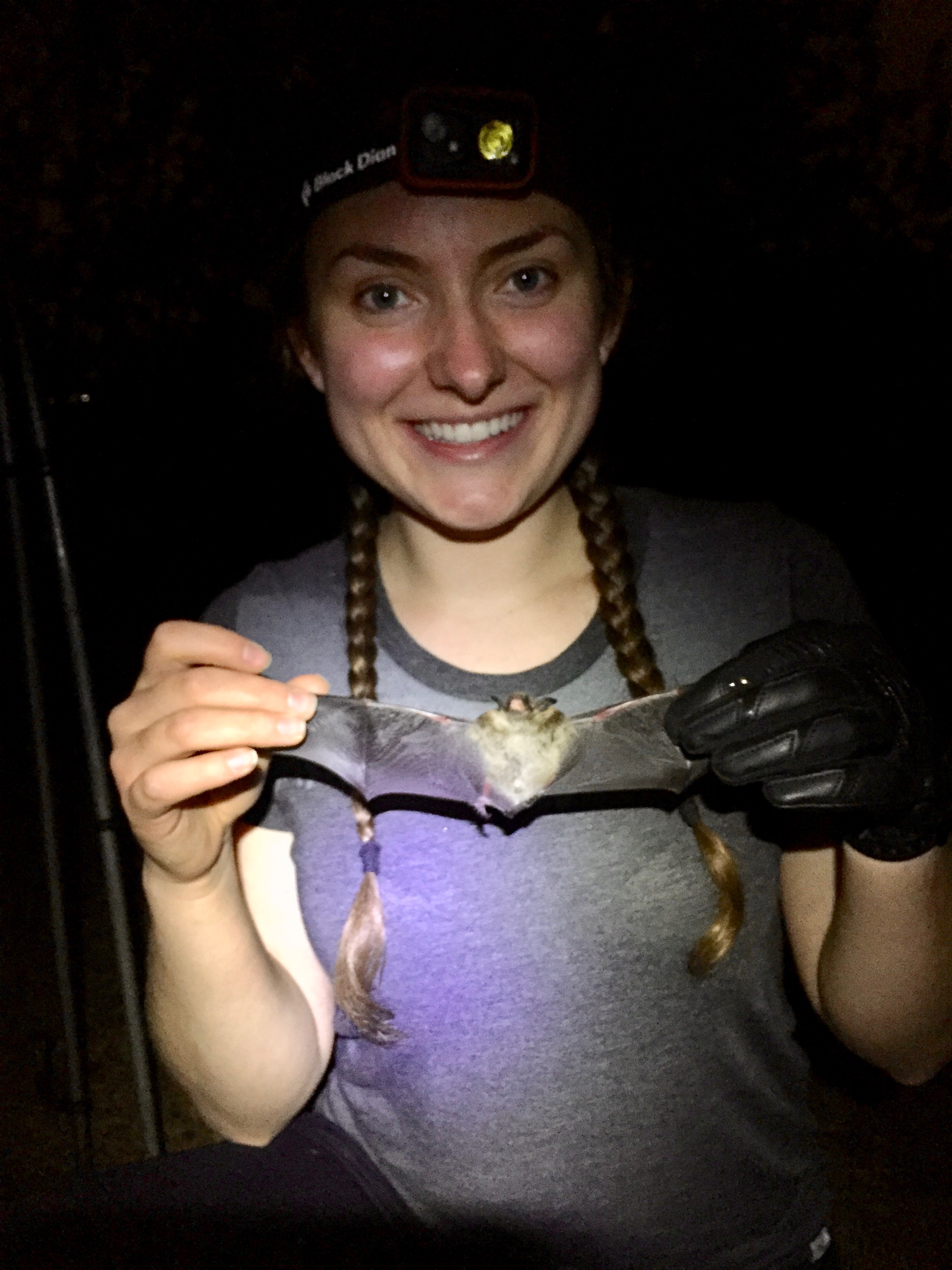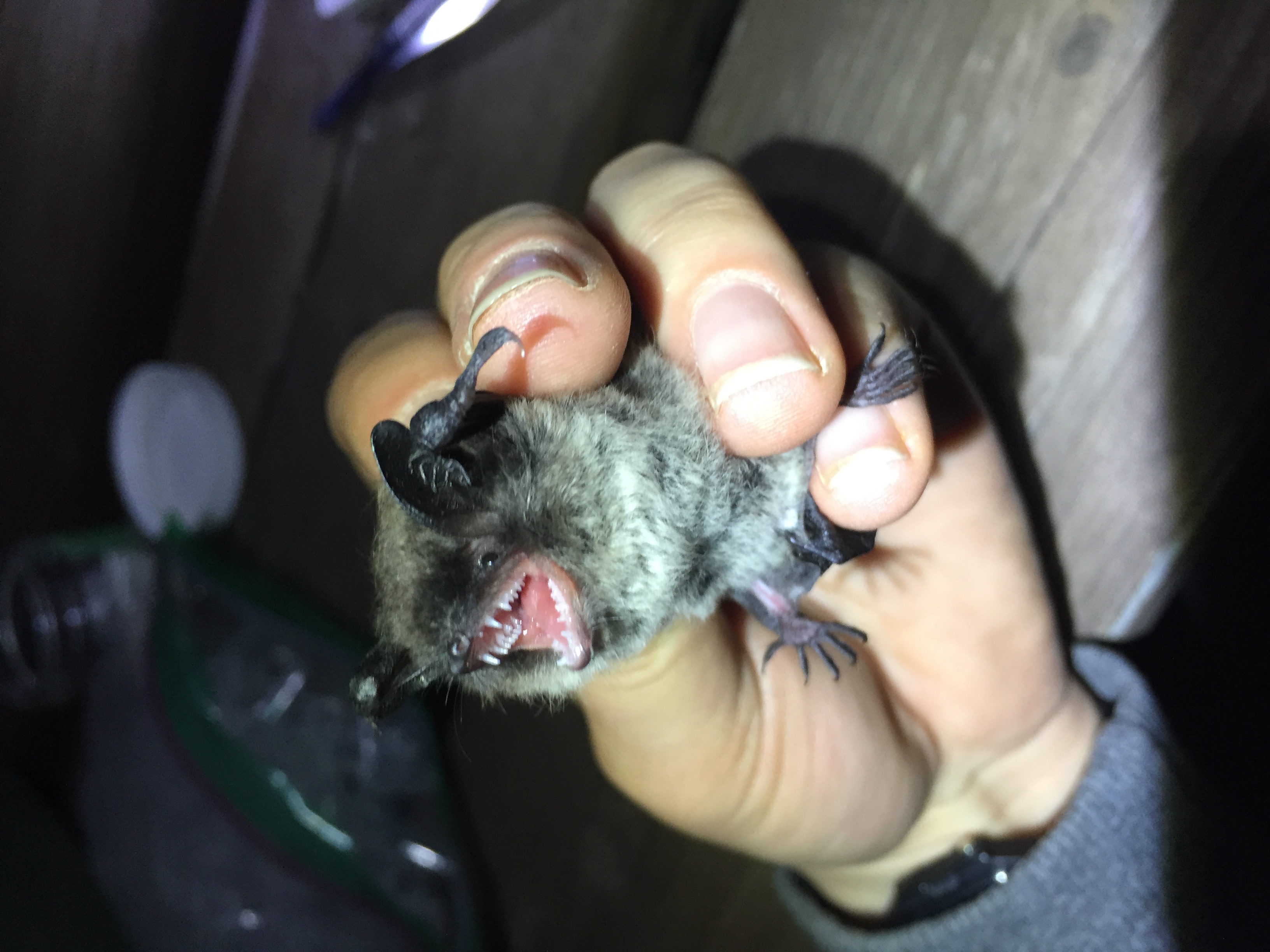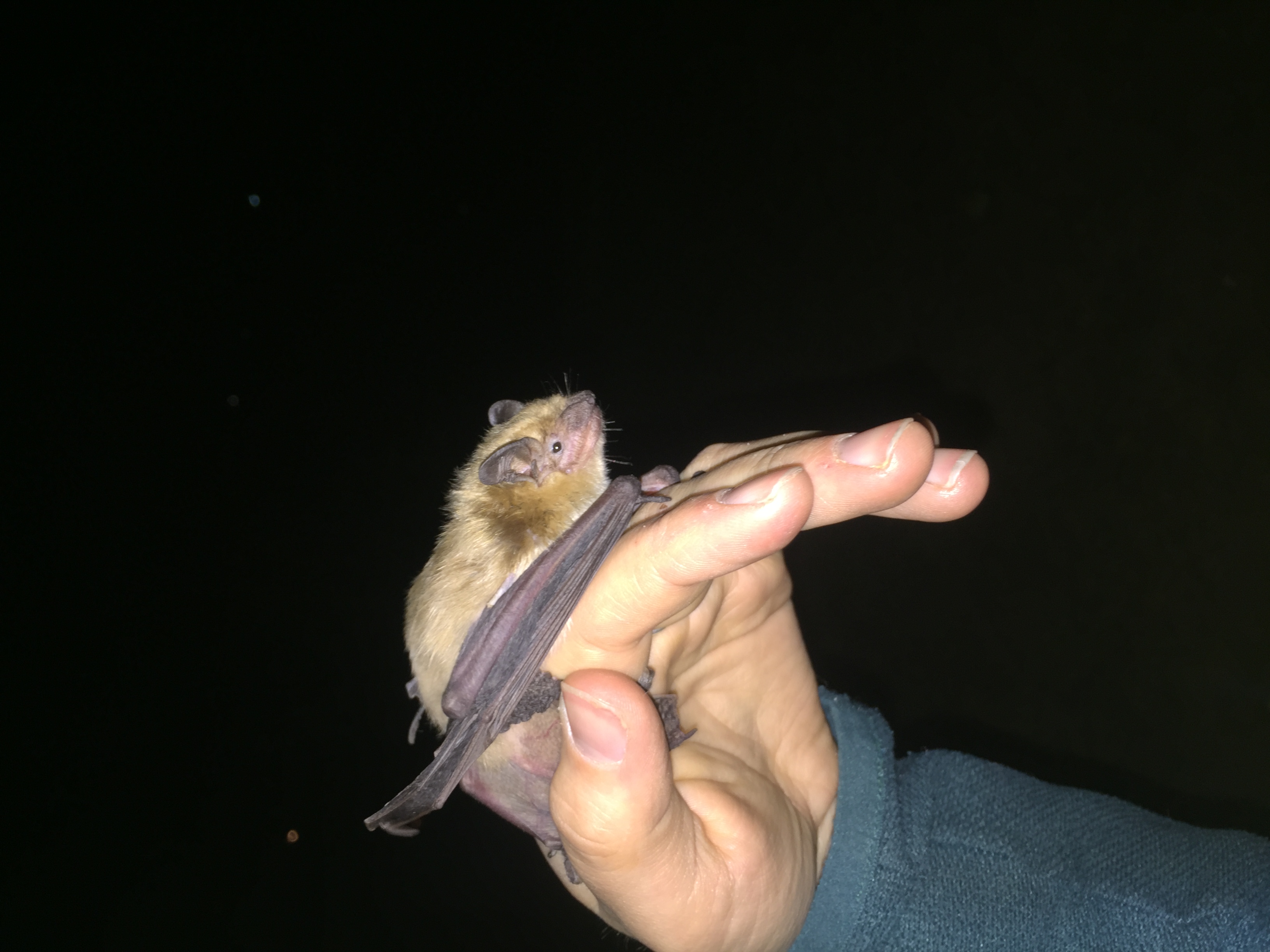Bats
During my undergraduate degree, I was able to conduct two honours research projects, both of which were on bats.
As a researcher in Dr. Robert Barclay’s Lab, I worked in the parks within Calgary as well as in Kananaskis every night that had adequate weather and while in Belize on a school trip, collecting data. I examined the diet of the Little Brown Bat (Myotis lucifugus) and the Long-Eared Bat (Myotis evotis), as well as wing morphology differences between sexes and varying foraging styles. Using mist nets and harp traps to catch bats, I took forearm, weight, sex, reproductive status, and age for each bat caught, and some bat were flown in a flight cage to try to determine how bats catch spiders. Additionally, wing photos were taken in order to analyze the amount of sexual dimorphism that occurs in bats of various foraging styles. Additionally, I was able to train the next set of researchers all about how to mist net for bats, identify different species, and how to plan their field season. This work was published as Maucieri and Barclay 2021.
I began working with Dr. Jessica Theodor's lab after my summer field season with Dr. Barclay. I took wing photos with working with Dr. Barclay, in order to analyze the amount of sexual dimorphism that occurs in bats of various foraging styles using geometric morphometrics under the guidance of Dr. Theodor. I examined sexual dimorphism within bat species, as female bats increase body mass by 20-30% during pregnancy resulting in larger female than male bats. This increase in female body mass should cause females to have different wing shapes to compensate for an increased body mass during the year and I am examining if there are differences in the amount of sexual dimorphism based on the foraging style of each species as wing shape will also affect the maneuverability of the bats. This work was published as Maucieri et al 2021.
